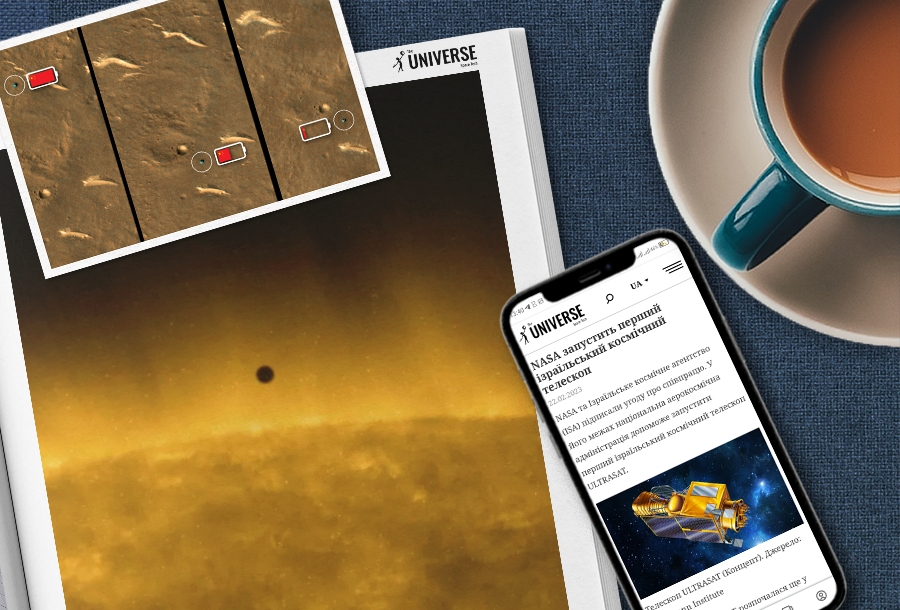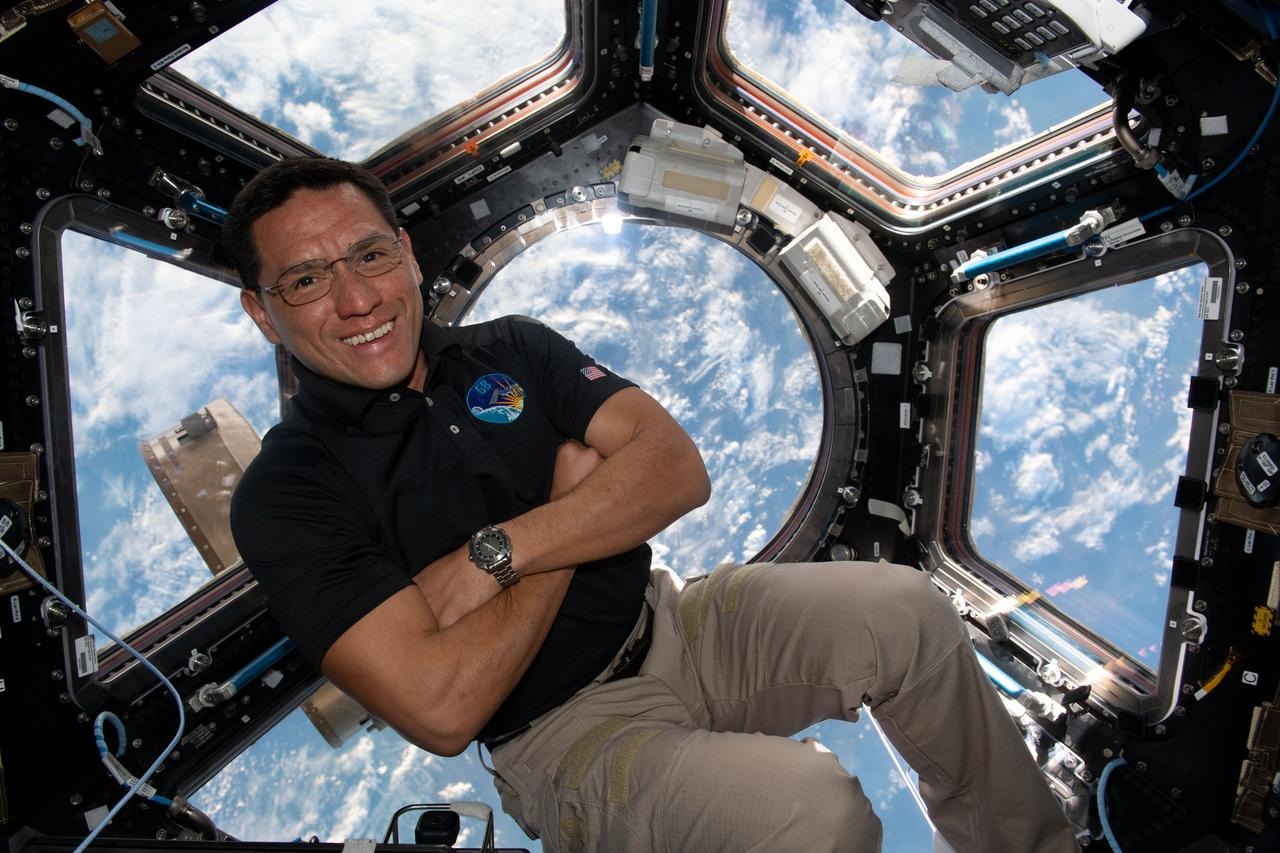Selection of the most interesting space news for the week: James Webb found evidence of the existence of a liquid ocean on an exoplanet close to us; Apollo 17 causes moonquakes, and we tell what color the sky is on other planets.

“Discovery consists of looking at the same thing as everyone else and thinking something different.”
― Albert Szent-Gyorgyi
No water ice may be present at the poles of the Moon
Most of the permanently shaded areas in the craters at the poles of the Moon were formed no earlier than 1.8 billion years ago. This was much later than the period when its bowels were spewing water. It is quite possible that there are no significant ice deposits there. At least, this conclusion can be drawn from a recently published study. The Moon has no atmosphere, and its gravity is much weaker than Earth’s. Therefore, the water in it can only be in two states. Below a certain temperature, it is in a state of ice. Above it, it immediately turns into gas, bypassing the liquid state. And the water vapor almost immediately flies into space.
But such conditions exist on the Moon only in places without sunlight. Therefore, if there are large deposits of ice on our moon somewhere, then it must be deep craters at the poles. There, the sun’s rays fall on the surface at such a small angle that they never reach their bottom. But all of the above is true only if the angle of inclination of the axis of the Moon has not changed since the very beginning of its formation. For several decades, people have known that this is not the case; and at one time, its slope changed a lot. Accordingly, only the water that got there after this event could be preserved at the poles because those craters in which it was before became fully illuminated.
James Webb confirms the existence of a liquid ocean on a nearby exoplanet
The James Webb Space Telescope (JWST) has found exciting evidence that important carbon molecules may exist in the atmosphere of the exoplanet K2-18 b, also known as the “Hycean world”, indicating the presence of a liquid ocean and other chemical bonds that make this world potentially habitable. New research conducted by a team of astronomers has found traces of carbon dioxide and methane in the atmosphere of K2-18 b. This indicates the presence of complex chemical compounds that may indicate the existence of an ocean on this planet. Importantly, no ammonia has been detected, which reinforces the hypothesis of a watery ocean.
Nikku Madhusudhan, a leading scientist at Cambridge University, notes that these results highlight the importance of exploring different types of planets in the search for life in space. Until now, astronomers have focused on smaller rocky planets, but hydrogen worlds like K2-18 b are becoming increasingly interesting to study. Despite the exciting discoveries, it is important to remain cautious in making conclusions about alien life. Even if there are carbon molecules and traces of water in the atmosphere of K2-18 b, this does not guarantee the existence of life or its suitability on this planet.
ESA accidentally “hacked” the Solar Orbiter camera and revealed new secrets of the Sun
The European Space Agency’s (ESA) Solar Orbiter spacecraft makes a long series of flights past the inner planets of the Solar System to get closer and closer to the Sun with each flyby. Eventually, it will approach a distance of 26 million kilometers to observe the Sun up close, and enter the orbit of Mercury. This will be the closest distance that the camera has ever come to the Sun to take detailed pictures of our star.
However, in the intervals between close approaches to the Sun, the Solar Orbiter team does not mess around. Recently, members of the development team of the Solar Orbiter’s Extreme-Ultraviolet Imager (EUI) have found a new way to use the instrument to make it more sensitive to weak extreme ultraviolet light. The hacking happened by accident, because during the construction phase of the camera, engineers made changes to its protective door. There are a number of closing doors above the device that protect it during launch and during travel through the Solar System. A small extra weight has been added to the security door, which is called a “thumb”. The team realized that when the door is half open, this “thumb” will hang in front of the brightest part of the solar disk, which will allow them to detect weak light coming from the solar atmosphere.
Apollo 17 lander causes “moonquakes”
When the Apollo 17 mission was on the Moon, they left seismometers at their landing site. Thanks to them, people have become convinced that sometimes there are surface fluctuations on this celestial body. However, it has turned out that there is a hitherto unknown type of this phenomenon. Most of the “moonquakes” recorded by the Apollo 17 seismograph are of the thermal type. With the change of day and night, the surface of our moon warms up to 121 °C, then cools down to 133 °C. These differences deform the surface, and these phenomena occur both at dawn and at sunset. At the same time, their frequency is extremely accurate.
The main research on these seismometers was completed back in the 1970s. However, their data has been stored until now. And scientists, checking them, made an amazing discovery. They found a fifth, previously unknown type of “moonquake”. They were repeated only in the morning. When the researchers began to check what caused them, they found that the reason was the landing stage of Apollo 17. This massive metal structure remained standing on the surface after the astronauts flew home. And every time the Sun rises above the Moon, it heats up this product of the human mind, and it jumps a little above the surface. And no matter how small these fluctuations are, seismographs perceive them.
Artemis mission is under threat due to NASA’s astronomical expenses
Senior NASA officials said that the super-powerful Space Launch System (SLS) rocket, designed to implement the ambitious Artemis program to return people to the Moon, faced a serious obstacle. A report published by the US Government Accountability Office expresses outrage about the huge costs associated with the development and launch of this rocket.
The report, which analyzes in detail the costs of the SLS program, contains strong criticism that the space rocket is considered inefficient and financially unjustified at the current stage. In addition, the report indicates a lack of transparency in the costs of this program, leaving many unanswered questions. Unfortunately, it does not specify the specific names of those who expressed this criticism at NASA.
Photo of the week
The European Space Agency (ESA) has published a video taken by the Meteosat satellite of the third generation (Meteosat-12). It demonstrates the global circulation of clouds and thunderstorm activity of the Earth.
Interesting figure — 371 days in orbit

Last September, NASA astronaut Frank Rubio began his incredible journey into space, becoming the first American of Salvadoran descent to go into orbit. And now, 355 days later, Rubio has set another record – the longest stay in space among NASA astronauts. Rubio set a record on September 11, breaking 355 days, 3 hours and 45 minutes. This is an impressive achievement, because the previous record belonged to NASA astronaut Mark Wanda Hay. Rubio, who is on his first space mission, is scheduled to return to Earth in a few weeks, which will increase his time in space to 371 days.
Something to read on the weekend

Did you know that we have our own analogue of the Event Horizon Telescope? The largest astronomical instrument in Ukraine is the URAN radio interferometer array. It is really huge, its stations are located many hundreds kilometers apart all around Ukraine: near Kharkiv, near Odessa, and near the Shatsky Lakes in Volyn. We talked to Vyacheslav Zakharenko, the director of the Radio Astronomy Institute of the National Academy of Sciences of Ukraine. He explained to us how these radio telescopes work.
The second text that we recommend reading is the Multicolored sky. Our author, Volodymyr Manko, explains why the firmament on Earth is blue, and also reveals the secret of whether there are planets where the sky is colored differently.
Follow us on Twitter to get the most interesting space news in time
https://twitter.com/ust_magazine

